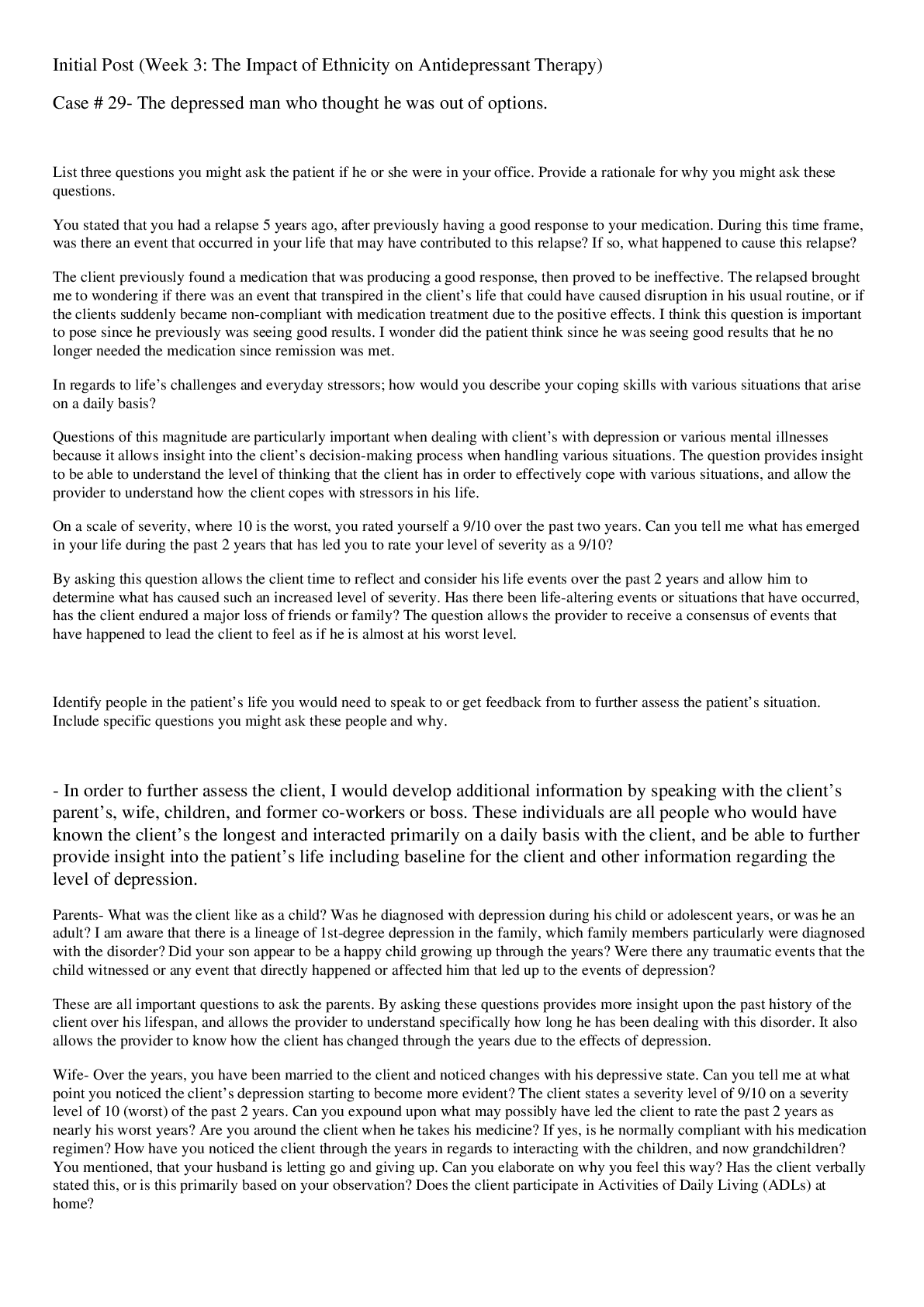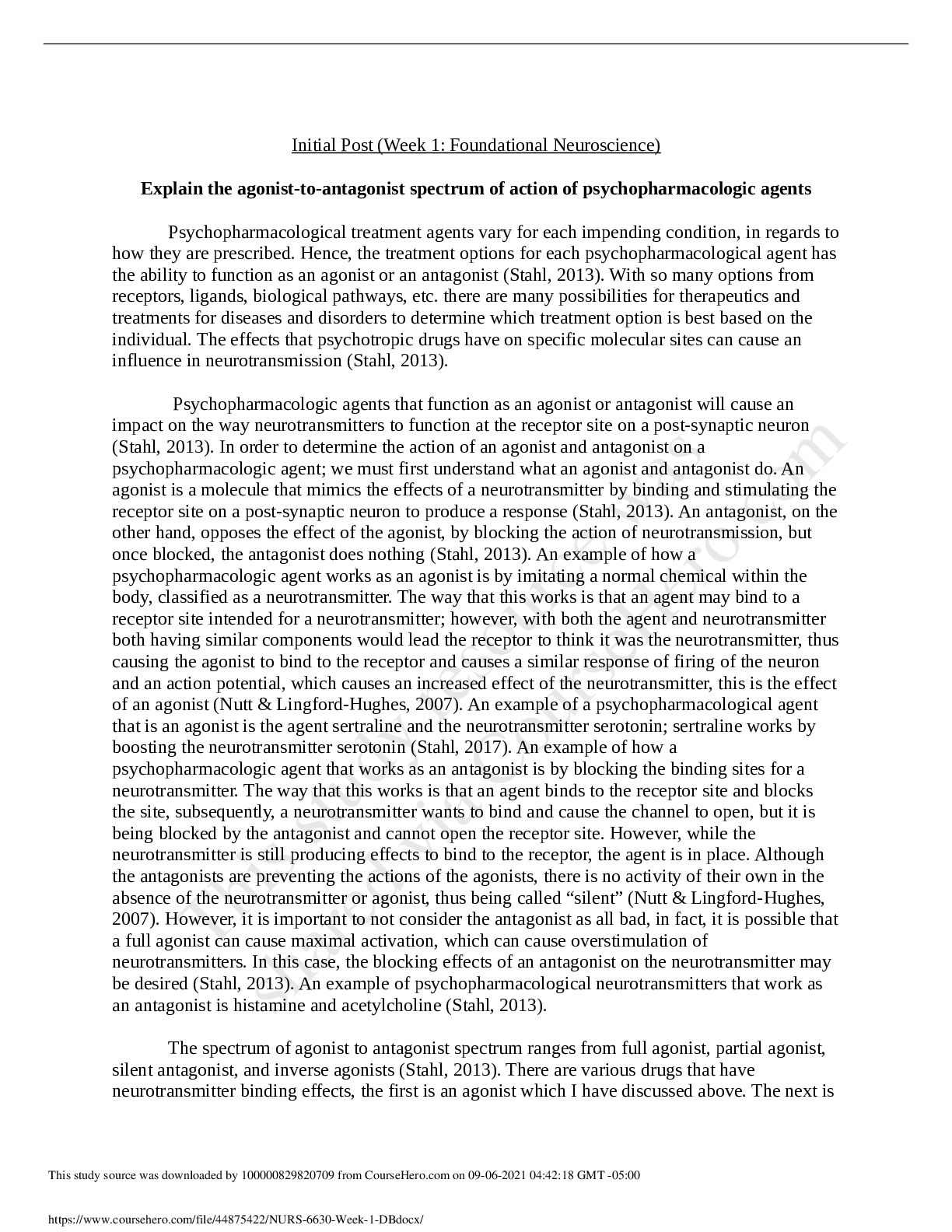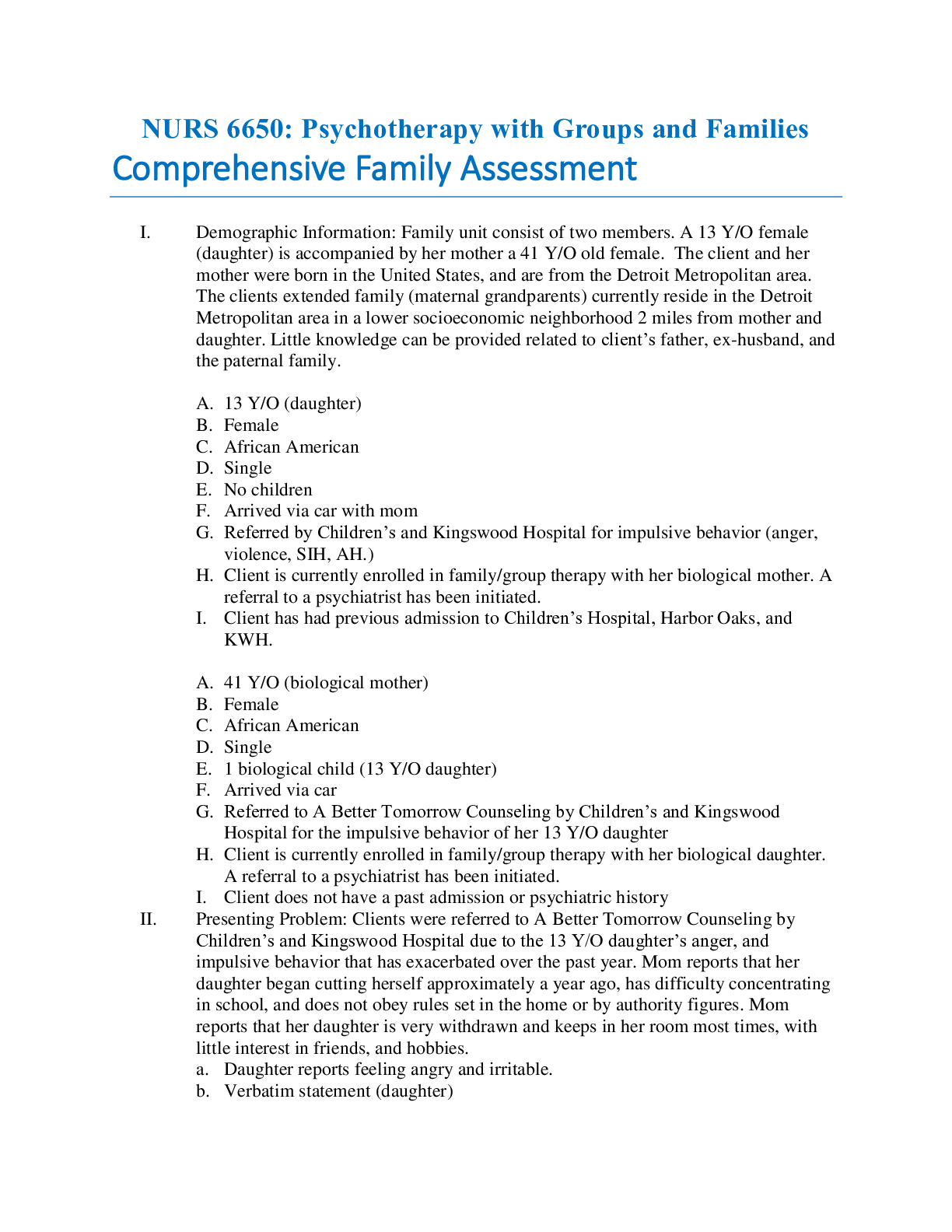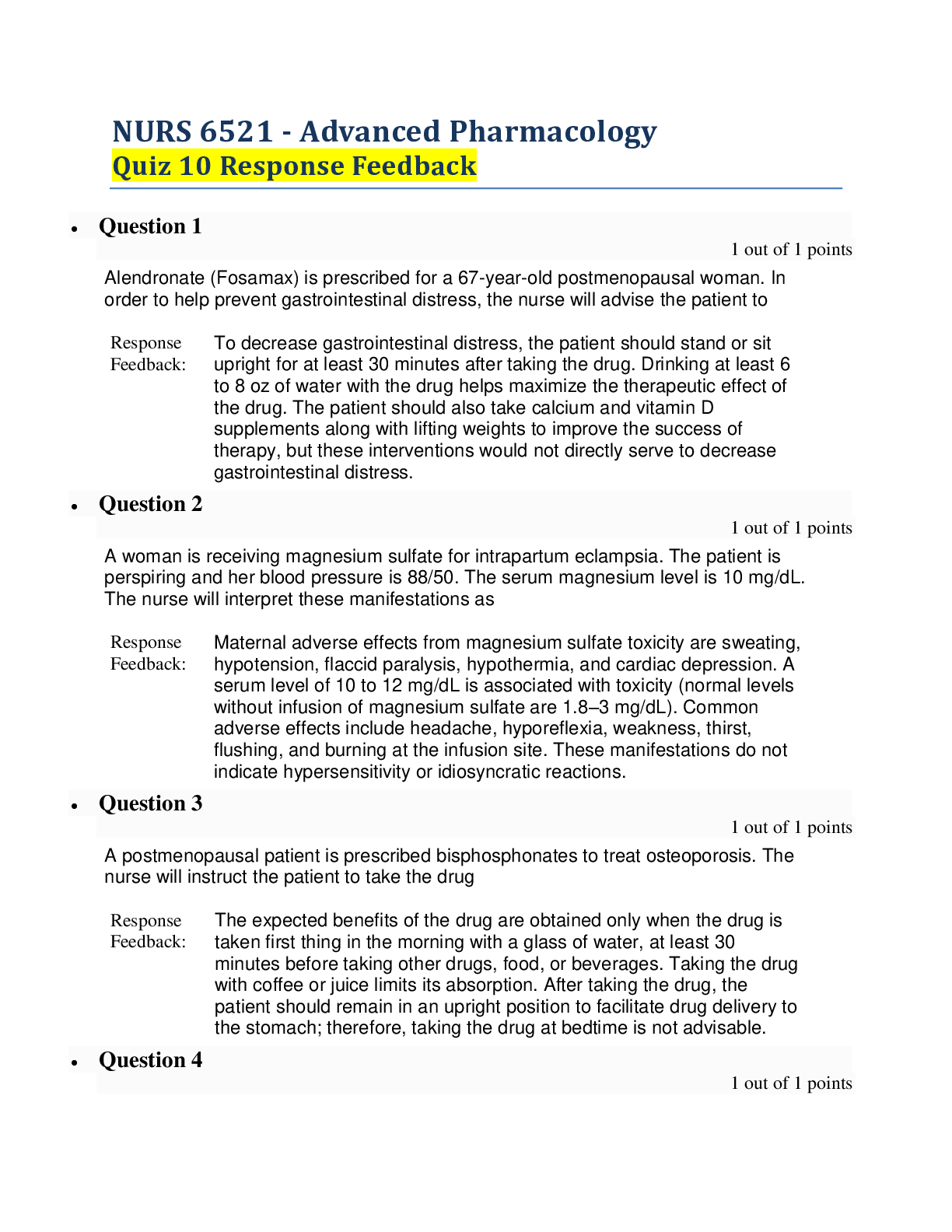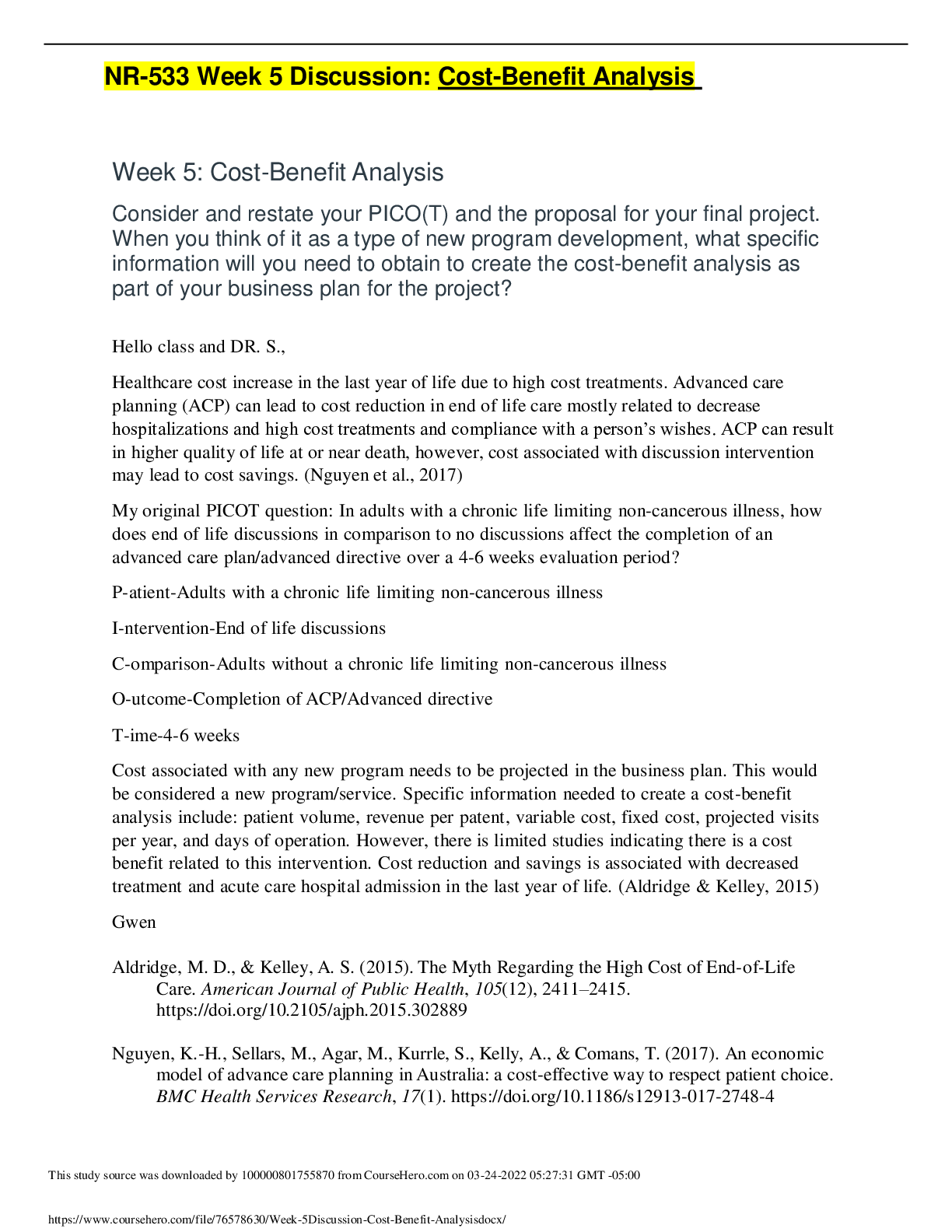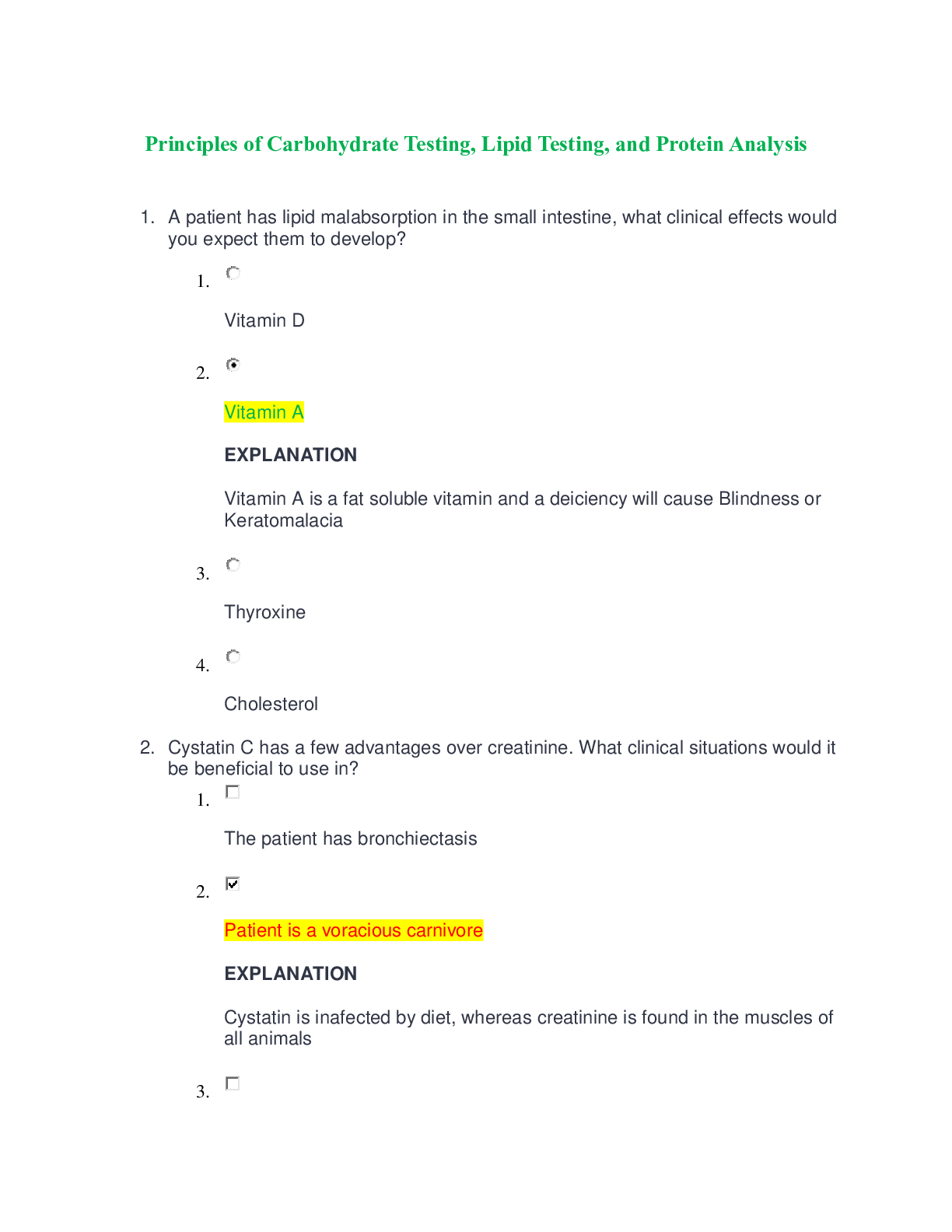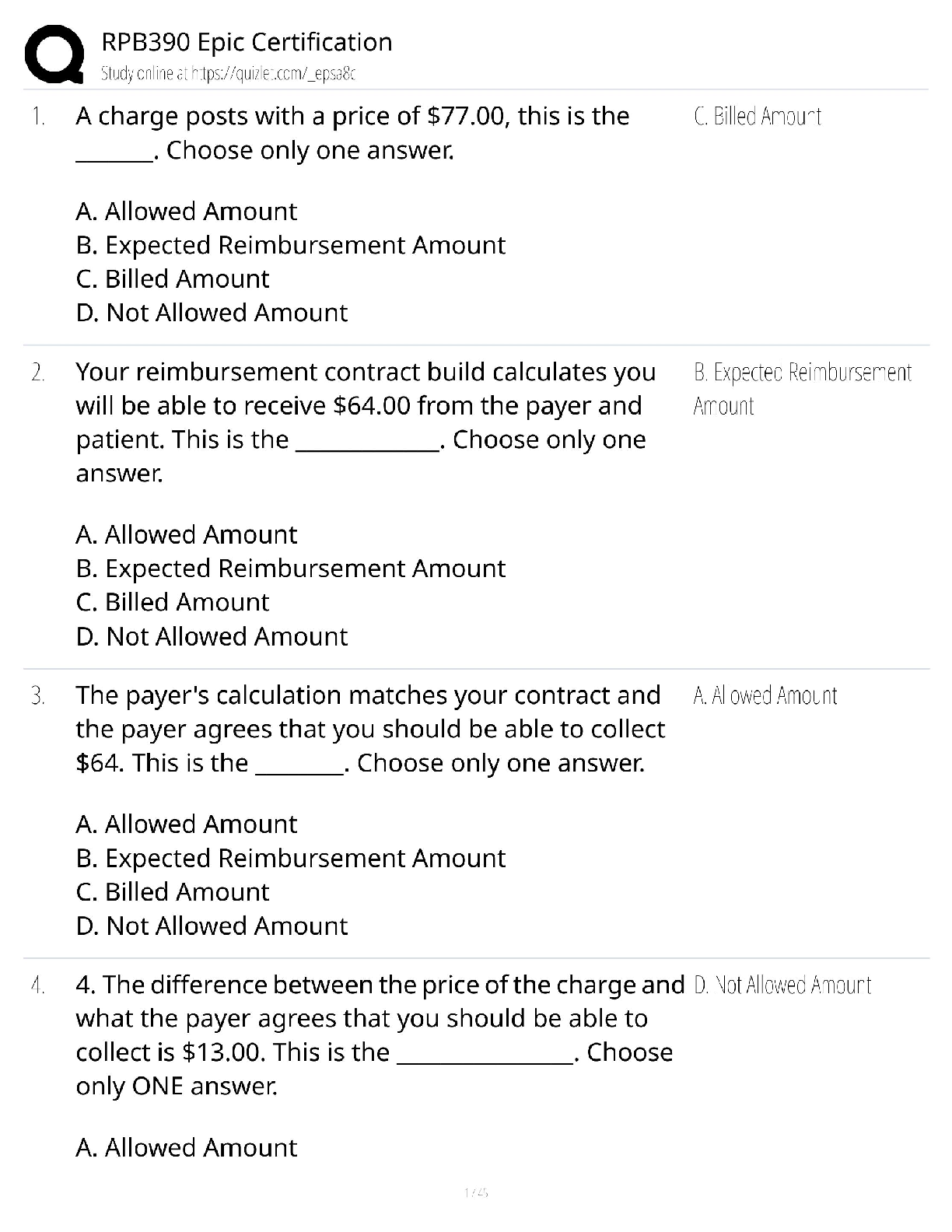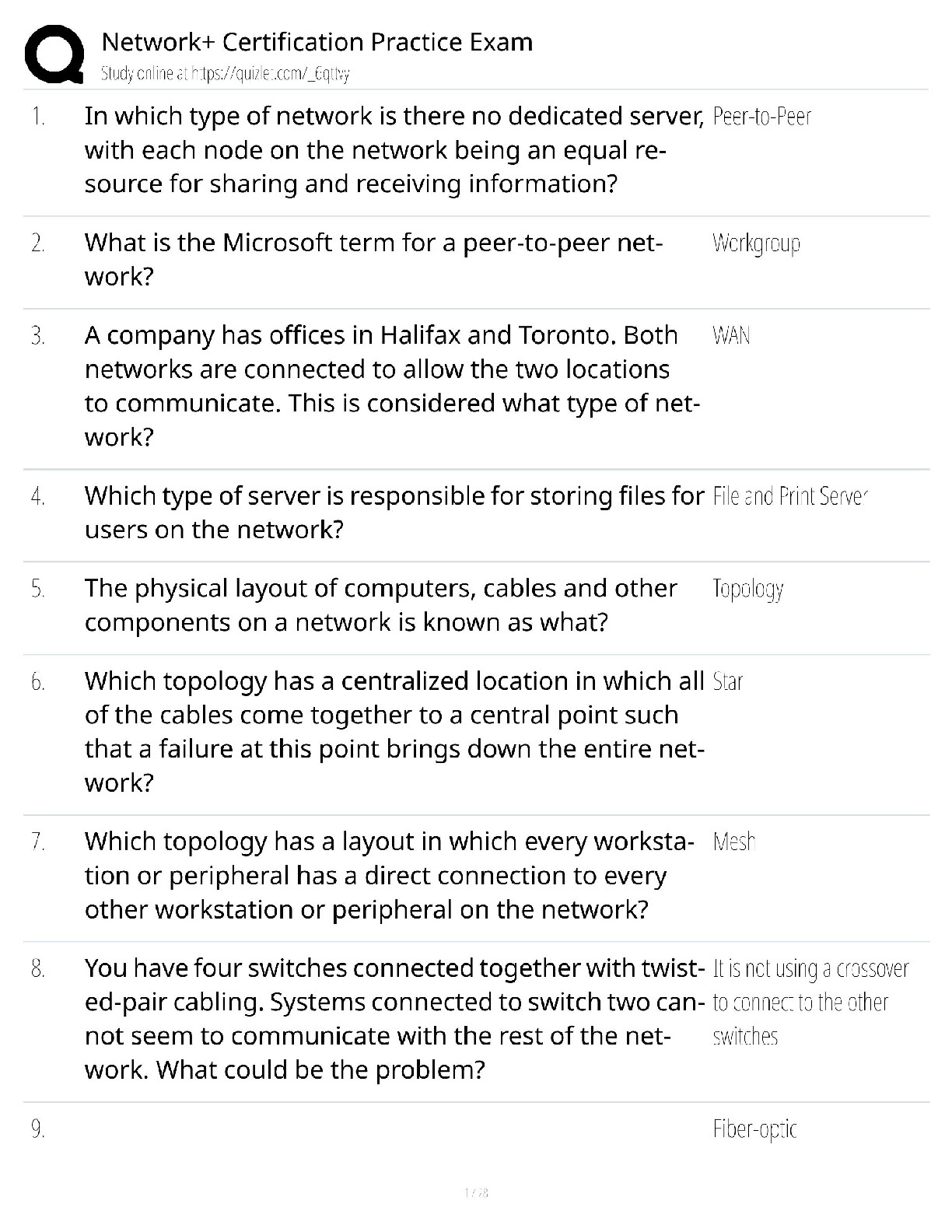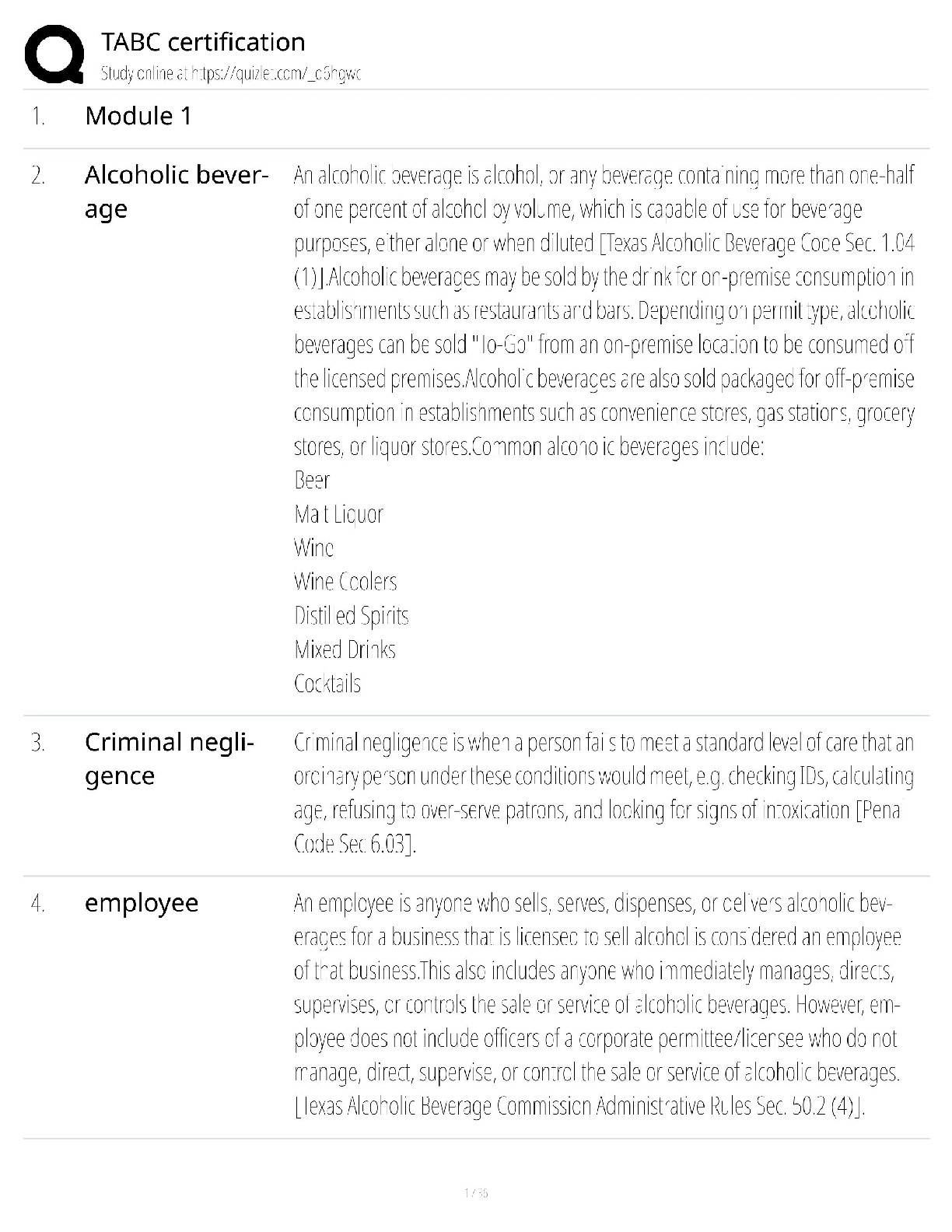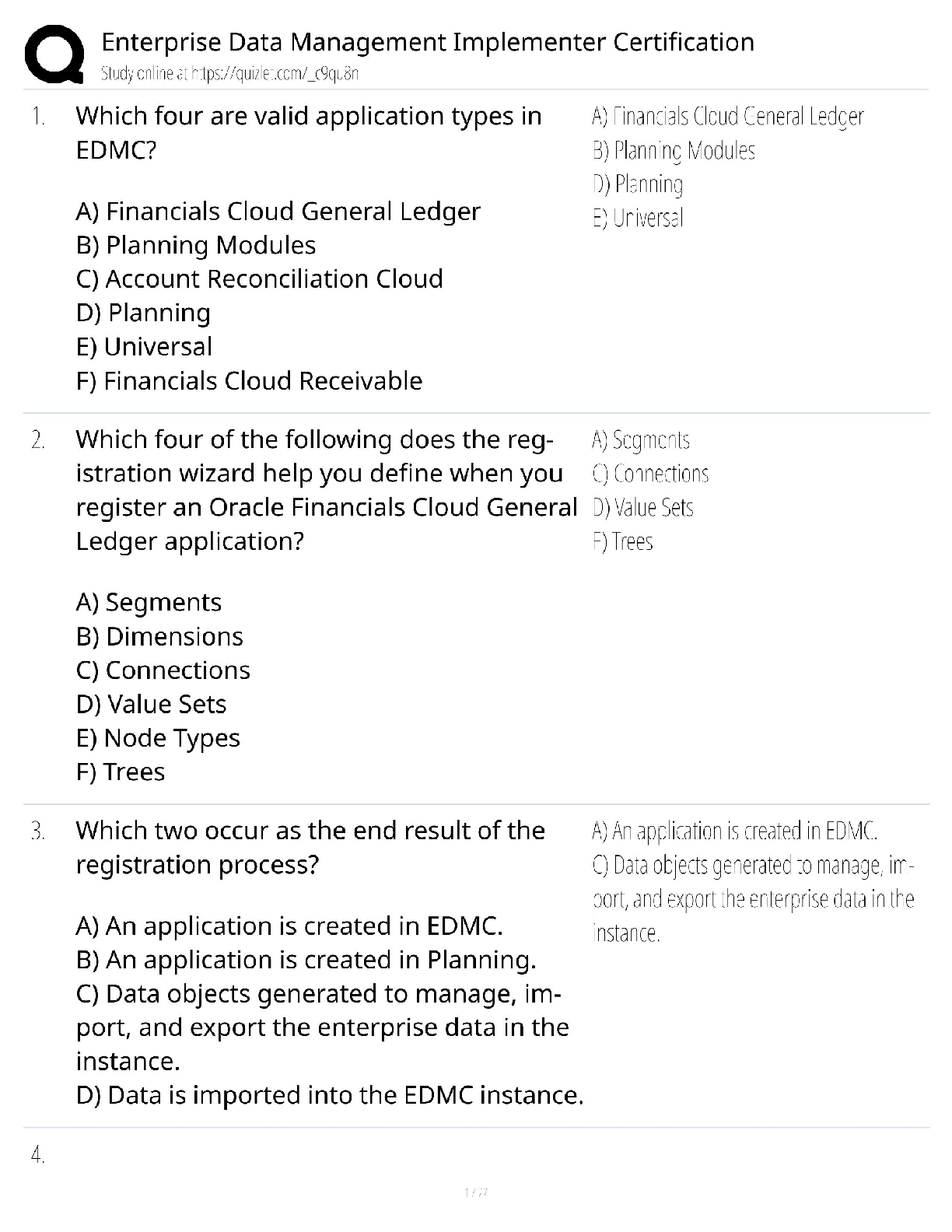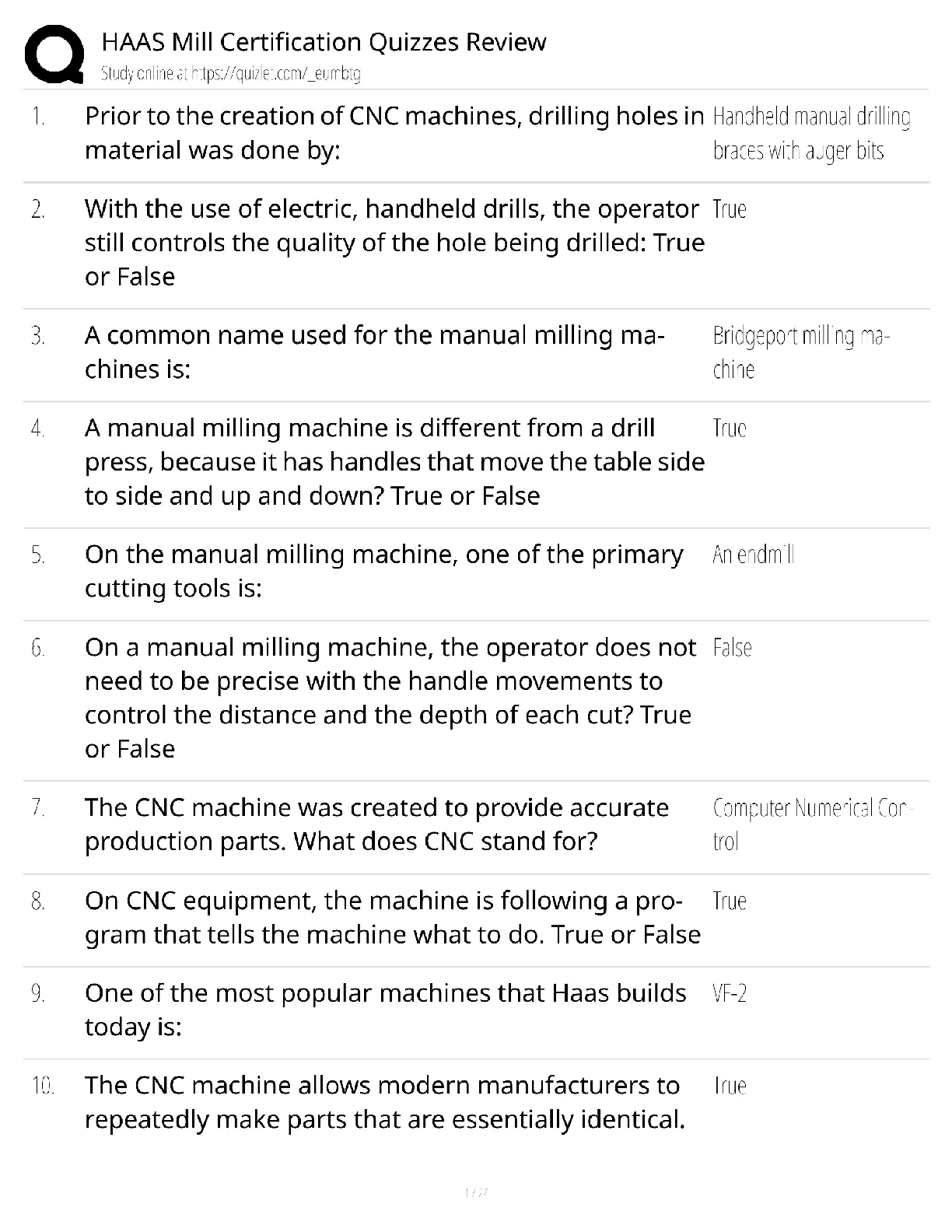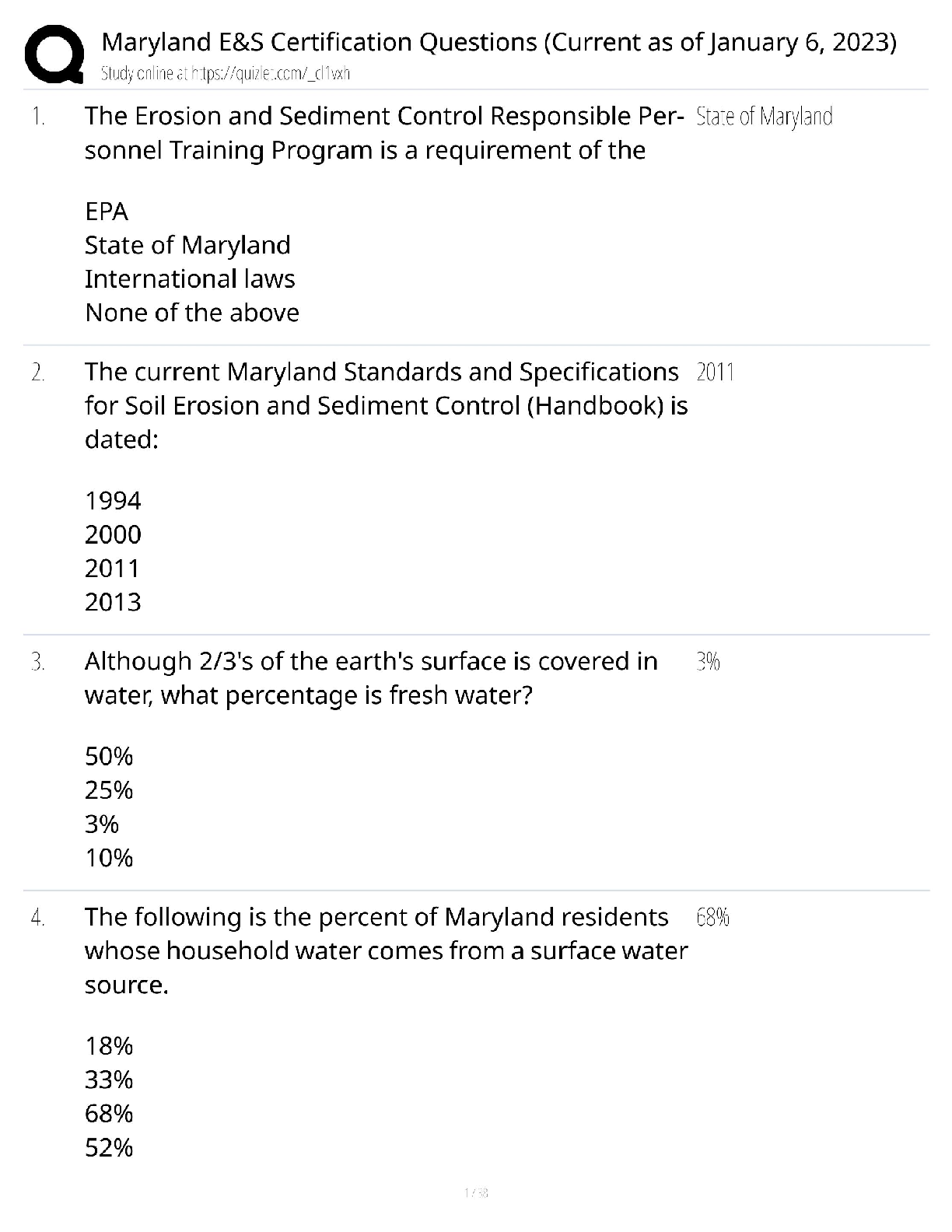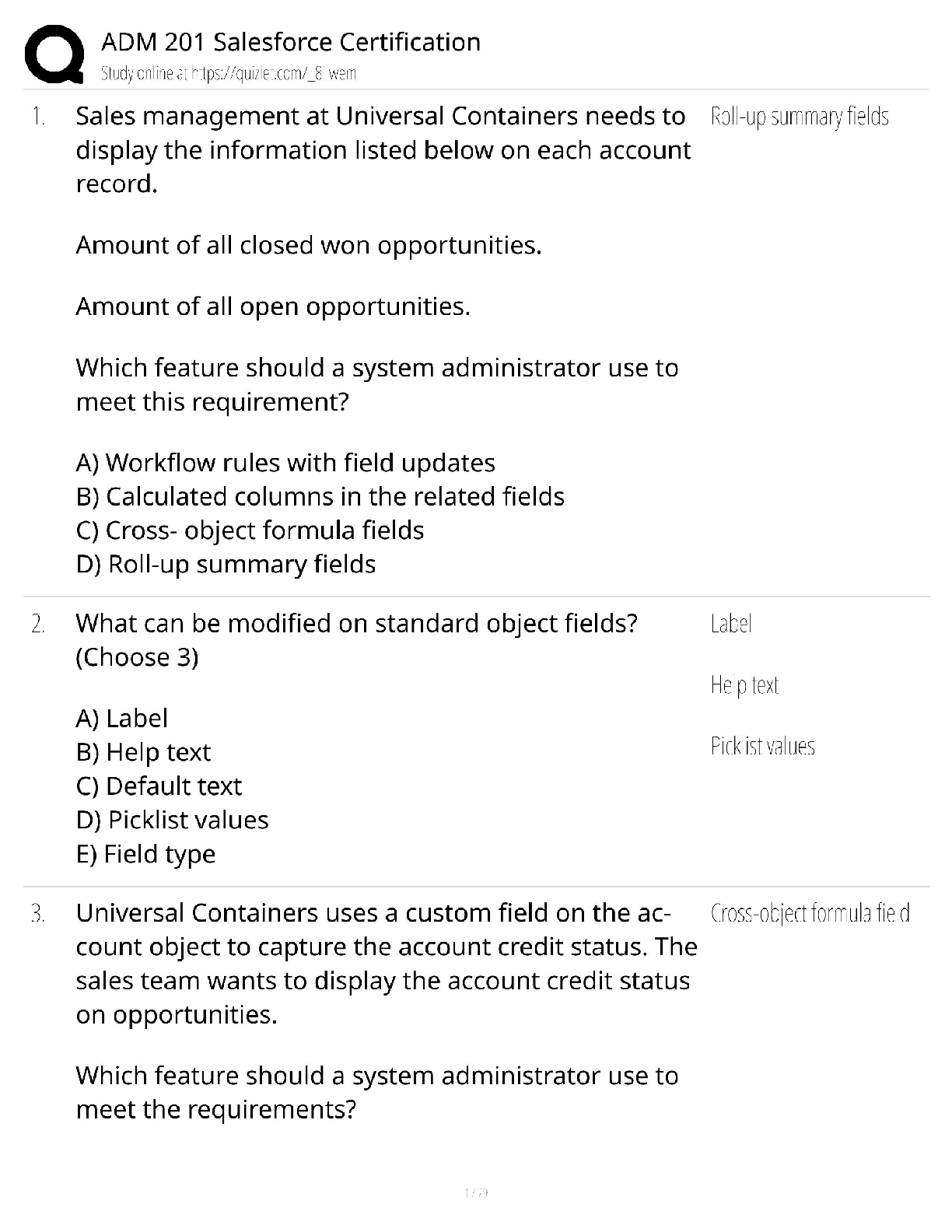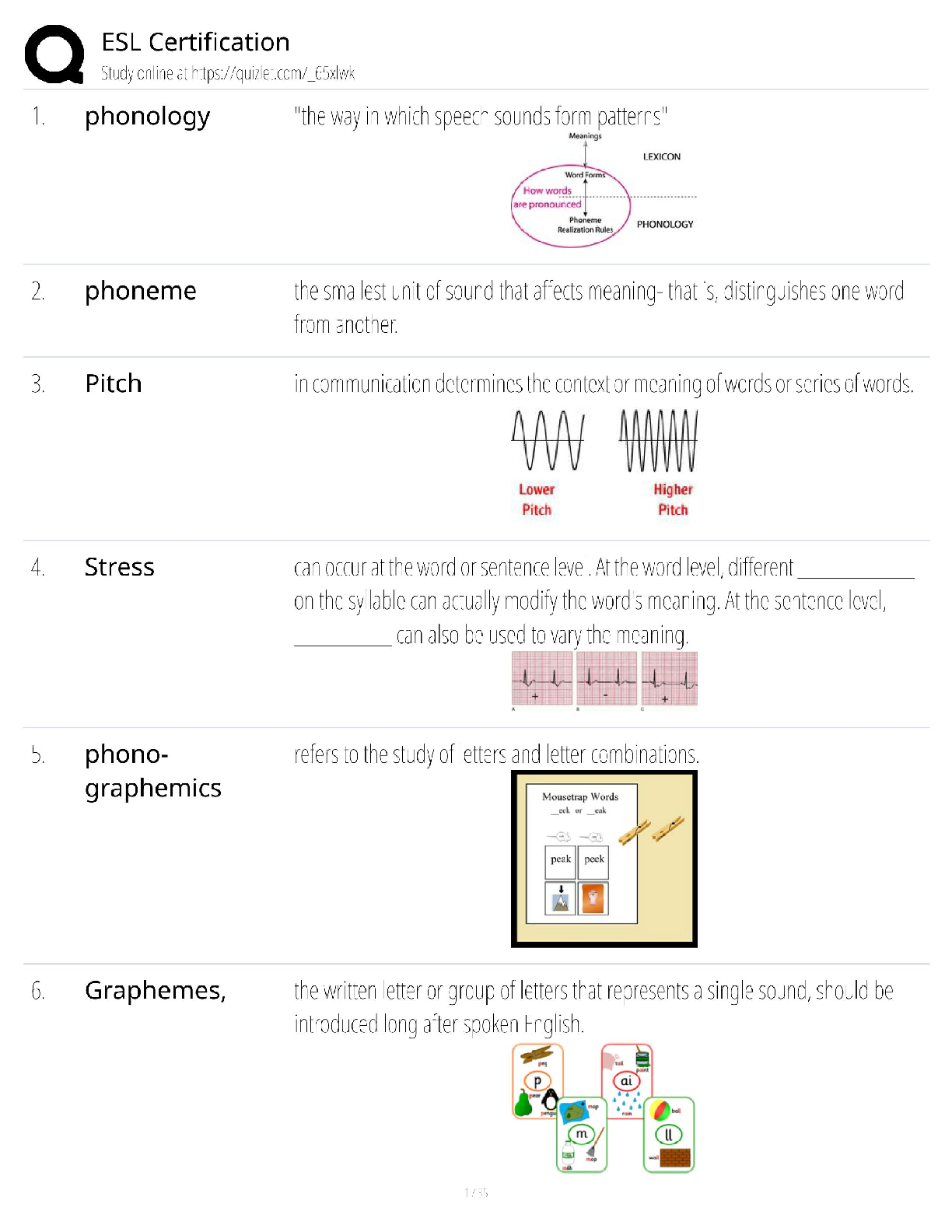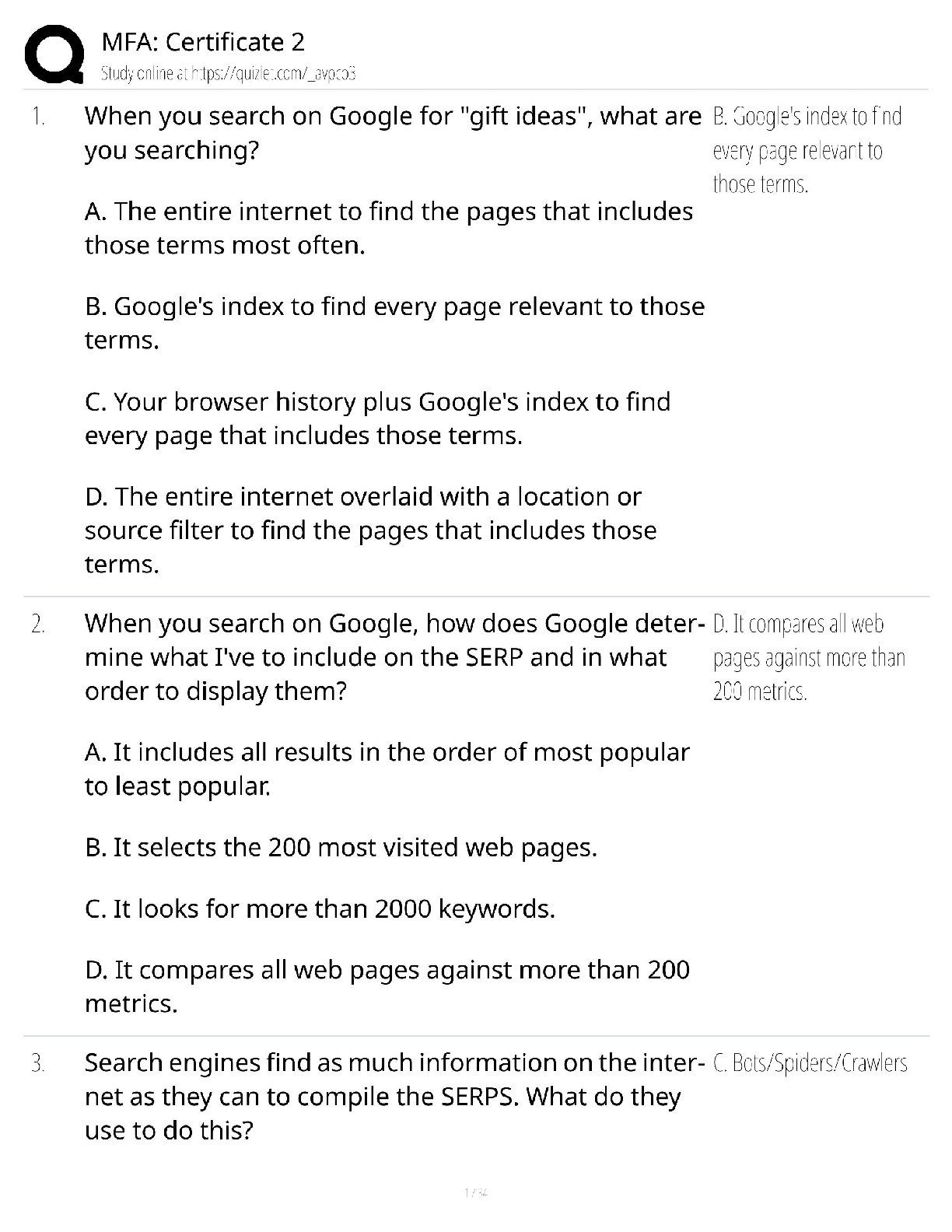*NURSING > QUESTIONS & ANSWERS > Nursing Prioritization & Delegation Set 2 | Contains 30 Commonly tested in Prioritisation Management (All)
Nursing Prioritization & Delegation Set 2 | Contains 30 Commonly tested in Prioritisation Management and Delegation or Care.
Document Content and Description Below
Nursing Prioritization & Delegation – Set 2 1. You are supervising a student nurse who is performing tracheostomy care for a client. For which action should you intervene? A. The student nurse suc ... tions the tracheostomy tube prior to performing tracheostomy care. B. The student nurse removes old dressings and cleans off excess secretions. C. The student nurse removes the inner cannula and cleans using universal precautions. D. The student nurse replaces the inner cannula and cleans the stoma site. E. The student nurse changes the soiled tracheostomy ties and secures the tube in place. 2. You are evaluating and assessing a client diagnosed with chronic emphysema. The client is on oxygen at a flow rate of 5 L/min by nasal cannula. Which finding concerns you immediately? A. The client has fine bibasilar crackles. B. The client’s respiratory rate is 8 breaths/minute. C. The client has a large barrel chest. D. The client sits up and leans over the nightstand. 3. You are acting as a preceptor for a new graduate RN during her second week of orientation. Which of the following client(s) would you assign the nursing care to the new RN under your supervision? (Select all that apply.) A. A 49-year-old new admission client with new diagnosis of esophageal cancer. B. A 56-year-old client with lung cancer just returned from left lower lobectomy. C. A 38-year-old client with moderate persistent asthma awaiting discharge. D. A 63-year-old client with tracheostomy needing trach care every shift. 4. You are the team leader RN working with a student nurse. The student nurse is to teach the client how to use a multidose inhaler without a spacer. Put the steps that the student nurse should teach the client in the correct order. A. Remove the inhaler cap and shake the inhaler. B. Tilt your head back and breathe out fully. C. Open your mouth and place the mouthpiece 1-2 inches away. D. Hold your breath for at least 10 seconds. E. Press down firmly on the canister and breathe deeply through your mouth. F. Wait at least 1 minute between puffs. Order: _A, b, c, e, d, f 5. Your client has chronic obstructive pulmonary disease (COPD). Which intervention for airway management should you delegate to the nursing assistant? A. Auscultate breath sounds every 4 hours. B. Teach client how to use incentive spirometry. C. Instruct client how to cough effectively. D. Assist client to sit up on the side of the bed. 6. After change of shift, you are assigned to care for the following clients. Which client should you assess first? A. A 51-year-old client with asthma complaining of shortness of breath after using a bronchodilator. B. A 68-year-old client on ventilator who needs a sterile sputum specimen sent to the laboratory. C. A 57-year-old client with COPD and pulse oximetry reading from the previous shift of 90% saturation. D. A 72-year-old client with pneumonia who needs to be started on intravenous antibiotics. 7. The client with pulmonary emboli (PE) is receiving anticoagulation with IV heparin. What instructions will you give the nursing assistant who will assist the client with ADLs? (Select all that apply.) A. Use a lift sheet when moving and positioning the client. B. Use an electric razor when shaving the client each day. C. Use a soft-bristled toothbrush or tooth sponge for oral care. D. Be sure the client’s footwear has firm soles for ambulation. E. Use a rectal thermometer to attain a more accurate body temperature. 8. You are precepting an RN who is orienting to the intensive care unit (ICU). The RN is providing care for a client with ARDS who has just been intubated in preparation for mechanical ventilation. You observe the nurse perform all of these actions. For which action must you intervene immediately? A. The RN assesses the client for bilateral breath sounds and symmetrical chest movement. B. The RN auscultates over the stomach to rule out esophageal intubation. C. The RN marks the tube 1 cm from where it touches the incisor tooth or nares. D. The RN orders a chest x-ray to verify the tube placement is correct. 9. You have just finished assisting the physician with a thoracentesis for a client with recurrent left pleural effusion caused by lung cancer. The physician was able to remove 1800 mL of fluid during the thoracentesis. Which assessment information will be of most concern? A. The client’s dressing at the thoracentesis site has 1 cm of bloody drainage. B. The client’s blood pressure is 100/48 and her pulse rate is 102 beats/minute. C. The client says that she has sharp, stabbing chest pain every time she takes a deep breath. D. The client cries and states that she cannot go on with treatment much longer. 10. A 24-year-old client with cystic fibrosis is admitted with increased shortness of breath and possible pneumonia. Which nursing activity is most important to include in the client’s care? A. Perform postural drainage and chest physiotherapy every 4 hours. B. Plan activities to allow at least 8 hours of uninterrupted sleep. C. Place in a private room to decrease the risk for infection. D. Discuss the client’s feelings about the need for a living will. 11. You are working in the ED when a patient arrives complaining of substernal and left arm discomfort that has been going on for about 3 hours. All of these baseline laboratory tests are drawn. Which one will be most useful in determining whether you should anticipate implementing the acute coronary syndrome (ACS) standard orders? A. C-reactive protein B. Myoglobin C. Creatine Kinase – MB D. Troponin I 12. You are monitoring a 53-year-old client who is having a stress test using a treadmill. Which of these symptoms will require the most immediate action? A. BP 152/88 B. Sinus Tachycardia, rate 134 C. Chest pain level 3 (1-10 scale) D. Oxygen saturation 91% 13. You are the charge nurse for the coronary care step-down unit. Which client is best to assign to an RN who has floated for the day from the general medical/surgical unit? A. Client just admitted with unstable angina and who has orders for a heparin infusion and aspirin. B. Client just transferred from the cardiac catheterization lab following a coronary angioplasty. C. Client receiving IV furosemide (Lasix) to treat acute left ventricular failure. D. Client requiring discharge teaching about coronary artery stenting prior to going home with spouse today. 14. At 9:00 PM , you admit a 63-year-old with a diagnosis of acute myocardial infusion (AMI) to the ED. The physician is considering the use of fibrinolytic therapy with tissue plasminogen activase (tPA, alteplase, [Activase]). Which information is most important to communicate to the physician? A. The patient has had continuous chest pain since 1:00 PM. B. The patient was treated with alteplase about 8 months ago. C. The patient takes famotidine (Pepcid) for esophageal reflux. D. The patient has T wave inversions on the 12 lead EKG. 15. A client with atrial fibrillation is ambulating in the hallway on the coronary step down unit and suddenly tells you, “I feel really dizzy”. Which action should you take first? A. Have the client breathe deeply. B. Take the client’s blood pressure. C. Check the client’s apical pulse. D. Help the client to sit down. 16. You are working in an outpatient clinic where many vascular diagnostic tests are performed. Which of these tasks associated with vascular testing will be most appropriate to delegate to an experienced nursing assistant? A. Provide brief patient teaching for a patient who will have a right subclavian vein Doppler study. B. Take an allergy history for a patient who is scheduled for a left leg contrast venography. C. Check blood pressure and pulse every 10 minutes for a patient who is having exercise testing. D. Measure ankle and brachial pressure for a patient having the ankle-brachial index calculated. 17. While working on the cardiac step-down unit, you are precepting a new graduate RN who has been in a 6 week orientation program. Which of these clients will be best to assign to the new graduate? A. A 33-year-old admitted a week ago with endocarditis who will be receiving ceftizoxime. B. A 19-year-old with rheumatic fever who needs discharge teaching prior to going home with a roommate today. C. A 50-year-old with newly diagnosed stable angina who has many questions about medication and nursing care. D. A 75-year-old who has just transferred to the unit after having coronary artery bypass grafting yesterday. 18. A diagnosis of ventricular fibrillation is identified for an unresponsive 50-year-old male who has just arrived in the ED. Which action will you take first? A. Defibrillate at 200 joules. B. Start CPR. C. Administer epinephrine (Adrenalin) 1 mg IV. D. Intubate and manually ventilate. 19. You have just received change of shift report about these clients on the coronary step down unit. Which one will you assess first? A. A 77-year-old who transferred from ICU 2 days ago after CABG and has a temp of 100.6°F. B. A 56-year-old who had a coronary angioplasty and stent placement yesterday and has complained of occasional chest pain since the procedure. C. A 45-year-old with constrictive cardiomyopathy who developed acute dyspnea and agitation about 1 hour before the shift change. D. A 26-year-old with heart failure caused by congenital mitral stenosis who is scheduled for balloon valvuloplasty later today. 20. The echocardiogram indicates a large thrombus in the left atrium of a client admitted with heart failure. During the night, the client complains of severe, sudden onset left foot pain. You note that no pulse is palpable in the left foot and that it is cold and pale. Which action should you take next? A. Check the client’s vital signs and oximetry. B. Administer oxygen at 4 L/min to the client. C. Lower the client’s left foot below heart level. D. Notify the physician about the assessment data. 21. As the manager of a cardiac surgery unit, you are responsible for developing a standardized care plan for the post-operative care of clients having cardiac surgery. Which of these nursing activities included in the care plan will need to be done by an RN? A. Develop individual plans for discharge teaching based on discharge medications and needed lifestyle changes. B. Administer oral analgesic medication as needed prior to assisting clients out of bed on the first postoperative day. C. Reinforce client and family teaching about the need to deep breathe and cough at least every 2 hours while awake. D. Remove chest and leg dressings on the second postoperative day and clean incisions with antibacterial swabs. 22. During a home visit to an 85-year-old client who is taking digoxin (Lanoxin) 0.125 mg daily to help control the rate of atrial fibrillation, you obtain this assessment data. Which finding is most important to communicate to the health care provider? A. The client’s apical pulse is 68 beats/min and irregularly irregular. B. The client takes the digoxin with meals. C. The client’s vision is becoming “fuzzy”. D. The client has lung crackles that clear after coughing. 23. After you receive change-of-shift report, which client should you assess first? A. An 18-month-old with coarctation of the aorta who has decreased pedal pulses. B. A 3-year-old with rheumatic fever who is complaining of severe knee pain. C. A 5-year-old with endocarditis who has crackles audible throughout both lungs. D. An 8-year-old with Kawasaki disease who has a temperature of 102.2°F (39°C). 24. As the pediatric unit charge nurse, you are working with a newly graduated RN who has been on orientation in the unit for 2 months. Which client should you assign to the new RN? A. A 2-year-old with a ventricular septal defect for whom digoxin (Lanoxin) 90 mcg by mouth has been prescribed. B. A 4-year-old who had a pulmonary artery banding and has just been transferred in from the ICU. C. A 9-year-old with endocarditis whose parents need teaching about IV antibiotic administration. D. A 16-year-old with a heart transplant who was admitted with a low-grade fever and tachycardia. 25. A new RN is preparing to administer packed red blood cells (PRBCs) to a client whose anemia was caused by blood loss after surgery. Which action by the new RN requires that you, the charge nurse, intervene immediately? A. The new RN tells the client that the PRBCs may cause a serious transfusion reaction. B. The new RN waits 20 minutes after obtaining the PRBCs before starting the infusion. C. The new RN starts an IV line for the transfusion using a 22 gauge catheter. D. The new RN primes the transfusion set using 5% dextrose in lactated Ringer’s solution. 26. A 32-year-old client with a history of sickle cell anemia is admitted to the hospital during a sickle cell crisis. The physician orders all of these interventions. Which order will you implement first? A. Administer oxygen at an FIO2 of 100% per non-rebreather mask. B. Immunize with Pneumovax and Haemophilus influenzae vaccines. C. Start a large gauge IV line and infuse normal saline at 200 mL/hour. D. Give morphine sulfate 4-8 mg IV every hour as needed. 27. A 78-year-old client is admitted to the hospital with chronic anemia caused by possible gastrointestinal bleeding has all of these activities included in the care plan. Which activity is best delegated to an experienced nursing assistant? A. Check for allergies to contrast dye or shellfish. B. Administer PEG-ES (GoLYTELY) for bowel preparation. C. Have the client sign a colonoscopy consent form. D. Use Hemoccult slides to obtain stool specimen. 28. You are making a room assignment for a newly arrived client whose laboratory testing indicates pancytopenia. All of these clients are already on the unit. Which one will be the best roommate for the new client? A. The client with cellulitis. B. The client with shingles. C. The client with digoxin toxicity. D. The client with viral pneumonia. 29. After receiving change of shift report about all of these clients, which one will you assess first? A. A 26-year-old with thalassemia major who has a short stay admission for a blood transfusion. B. A 44-year-old who was admitted 3 days ago with a sickle cell crisis and has orders for a CT scan. C. A 50-year-old with newly diagnosed stage IV non-Hodgkin’s lymphoma who is crying and stating, “I’m not ready to die”. D. A 69-year-old with chemotherapy-induced neutropenia who has an elevated oral temperature. 30. Toward the end of the shift, you, the RN, discover that the newly hired nursing assistant has not totaled clients’ I&Os for the past 12 hours. Which of the following actions should you take? A. Confront the nursing assistant about completing the intake and output measurements. B. Notify the nurse manager to include this on the nursing assistant’s evaluation. C. Ask the nursing assistant if assistance is needed to complete the I&O records. D. Delegate the task to another nursing assistant since the new hire may not have been educated on this task. [Show More]
Last updated: 1 year ago
Preview 1 out of 7 pages
 (1).png)
Buy this document to get the full access instantly
Instant Download Access after purchase
Buy NowInstant download
We Accept:

Reviews( 0 )
$8.00
Can't find what you want? Try our AI powered Search
Document information
Connected school, study & course
About the document
Uploaded On
Apr 17, 2021
Number of pages
7
Written in
All
Additional information
This document has been written for:
Uploaded
Apr 17, 2021
Downloads
0
Views
100

